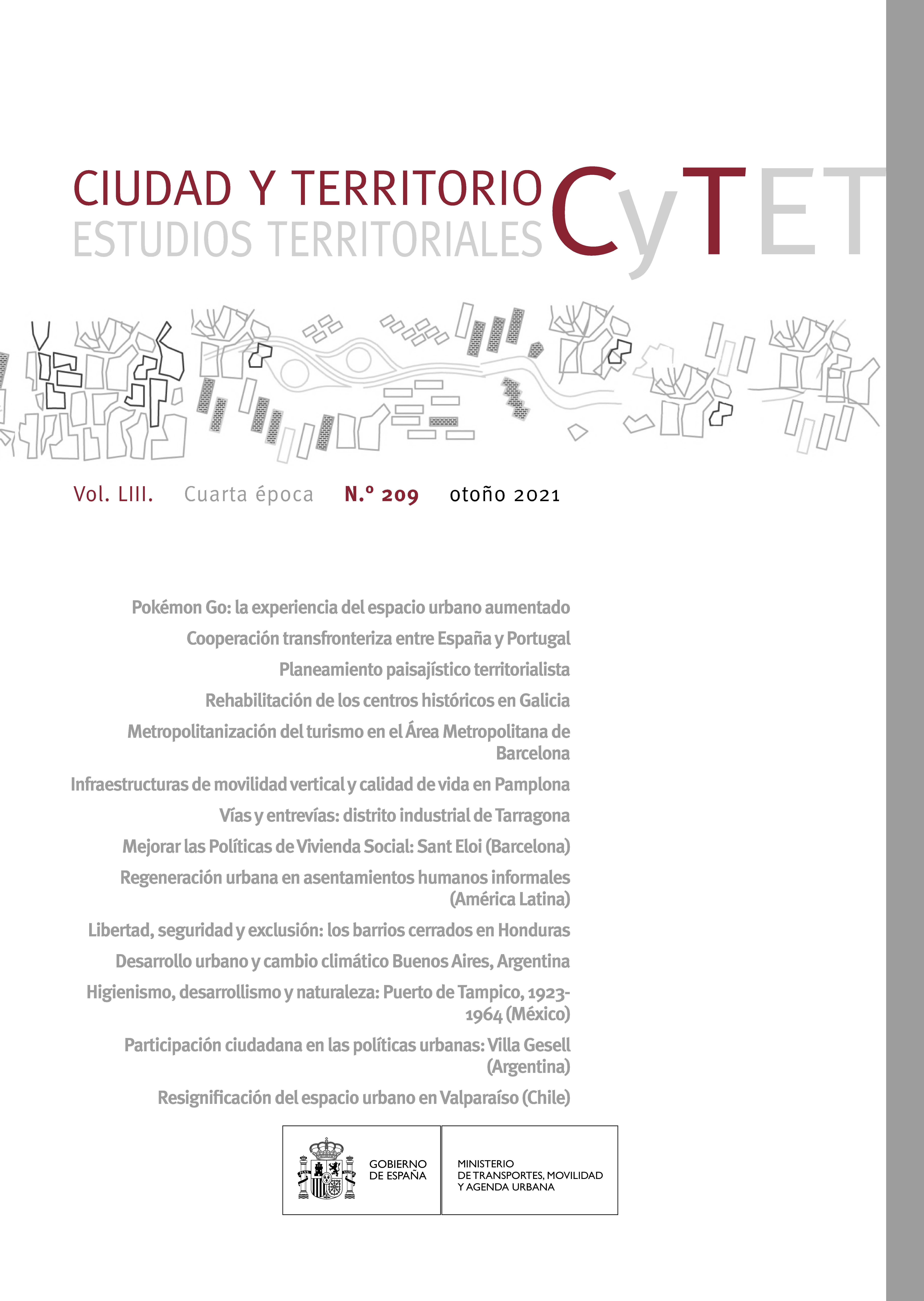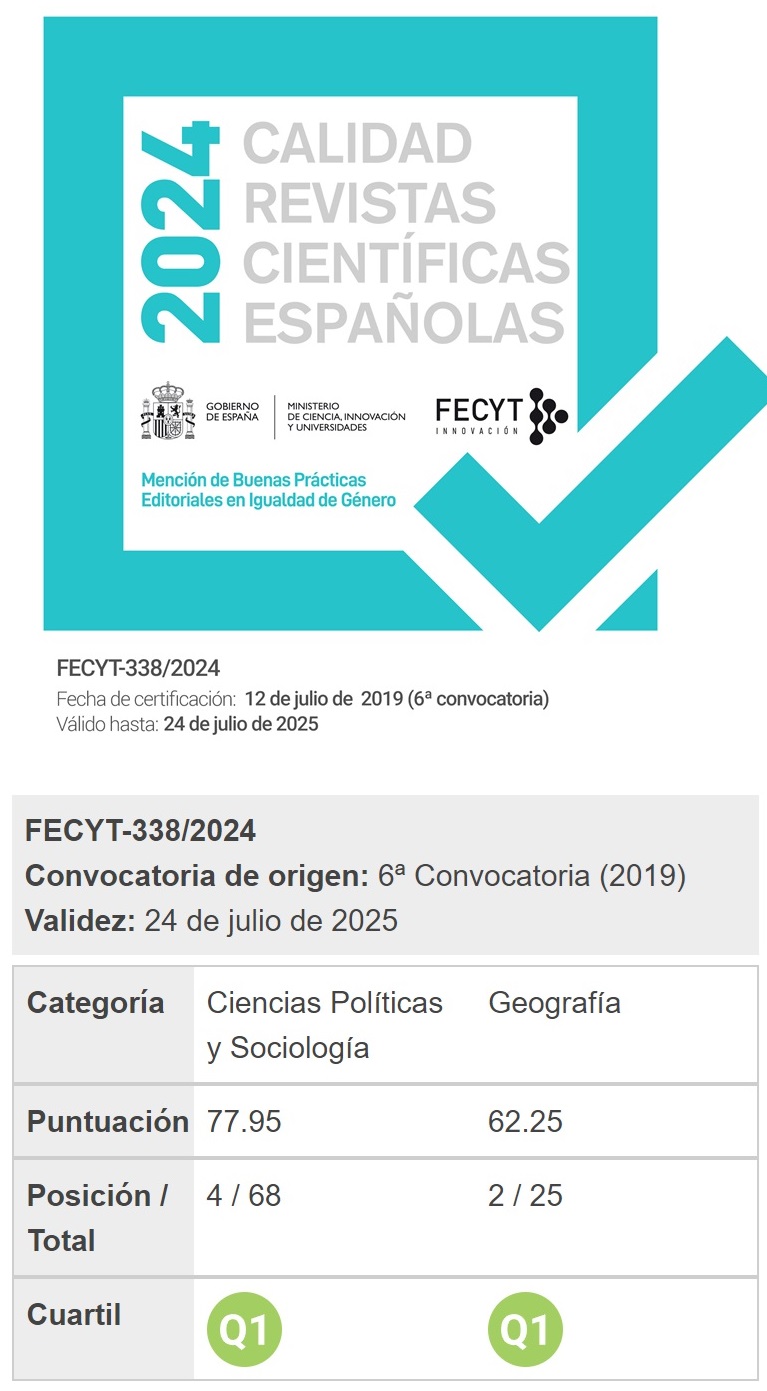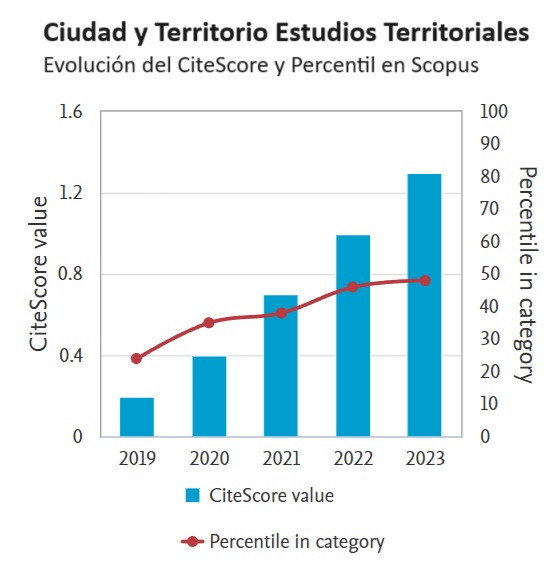Pokémon Go: la experiencia del espacio urbano aumentado
DOI:
https://doi.org/10.37230/CyTET.2021.209.01Palabras clave:
Pokémon, Videojuego, Espacio virtual, Diseño espacial, Espacio urbanoResumen
En 1996 se publicó el primer videojuego de Pokémon; 20 años después, en junio de 2016, se publicó el videojuego Pokémon Go que, empleando la realidad aumentada, se tornó en poco tiempo un fenómeno social que modificó el uso del espacio urbano de una forma inédita hasta el momento. El presente trabajo analiza por qué Pokémon pudo dar el salto de ser un juego de rol japonés a una aplicación móvil con más de 11 millones de usuarios diarios y cómo ese cambio se fundamenta en la importancia que el juego le da al espacio y la interacción con éste. Esta espacialidad se soporta a su vez en tres características del juego: dar a los jugadores el papel de explorador espacial, disolver la fina línea entre el mundo virtual y el material y desarrollar el juego para dispositivos móviles paulatinamente más integrados en la realidad del jugador. Esta evolución de Pokémon ligada al espacio ejemplifica y anticipa una naciente relación juego virtual – espacio urbano.
Descargas
Publicado
Cómo citar
Número
Sección
Licencia
Derechos de autor 2021 Aida Navarro Redón

Esta obra está bajo una licencia internacional Creative Commons Atribución-NoComercial-SinDerivadas 4.0.
Sin perjuicio de lo dispuesto en la legislación vigente sobre Propiedad Intelectual, y conforme a la misma, el/la los/las autor/a/es/as que publiquen en CyTET cede/n a título gratuito, de modo no exclusivo y sin límite temporal al Ministerio de Transportes, Movilidad y Agenda Urbana los derechos para difundir, reproducir, comunicar y distribuir en cualquier formato actual o futuro, en papel o electrónico, la versión original o derivada de su obra bajo licencia de Creative Commons Reconocimiento-NoComercial-SinObraDerivada 4.0 Internacional (CC BY-NC-ND 4.0), así como para incluir o ceder a terceros la inclusión de su contenido en índices, repositorios y bases de datos nacionales e internacionales, con referencia y reconocimiento en todo caso de la autoría del mismo.
Además, al realizar el envío, el/la los/las autor/a/es/as declara/n que se trata de un trabajo original en el que se reconocen las fuentes que han sido utilizadas en su estudio, comprometiéndose a respetar la evidencia científica y a no modificar los datos originales para verificar o refutar una hipótesis de partida; que el contenido esencial del mismo no ha sido publicado previamente ni se publicará en ninguna otra obra o revista mientras esté en proceso de evaluación en la revista CyTET; y que no se ha remitido simultáneamente a otra publicación.
Los autores deben firmar un Formulario de Cesión de Derechos, que les será enviado desde la Secretaría de CyTET una vez se acepte su artículo para ser publicado.
Con el objetivo de favorecer la difusión del conocimiento, CyTET se adhiere al movimiento de revistas de Open Access (OA) y entrega la totalidad de sus contenidos a diversos índices, repositorios y bases de datos nacionales e internacionales bajo este protocolo; por tanto, la remisión de un trabajo para ser publicado en la revista presupone la aceptación explícita por parte del autor/a de este método de distribución.
Se anima a las/os autoras/es a reproducir y alojar sus trabajos publicados en CyTET en repositorios institucionales, páginas web, etc. con la intención de contribuir a la mejora de la transferencia del conocimiento y de la citación de dichos trabajos.








 Enlace a CyTET en Linkedin
Enlace a CyTET en Linkedin